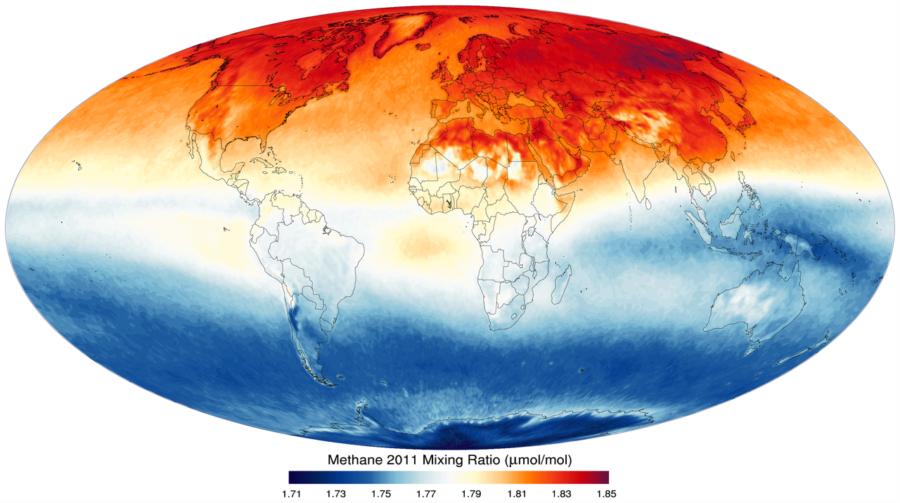Methane Death.
CO2 is in the middle of people’s minds when they think about global warming. But other gases are also responsible for that.
Methane (CH4) is a big part of the problem (20% of global warming). Methane is produced by chemical reactions in the sea, forest fires, ruminants’ digestion, and others. The effect of methane on global warming can be nine times worse than carbon dioxide.
Methane is not a substance that people can see in the air, but it is present. The New York Times has taken pictures with a special camera, in West Texas, showing that certain factories are releasing a lot of methane.
Methane absorbs the infrared rays produced by Earth and prevents them from escaping into space, which contributes to global warming while increasing heat in the atmosphere. CH4 is responsible for 20% of global warming since the Industrial Revolution.
Ruminants’ digestion is the third most important source of methane. One cow can produce 100 to 500 liters of CH4 per day, it can vary according to the weight of the animal and what it eats. Some food increases the production of methane in ruminants’ bodies. Farming is 92% of methane production in France.
Humans are eating and consuming a lot of farm products that means that eating less meat could contribute to reducing methane production. If everyone on the planet makes an effort it can reduce a lot of the methane in the air and could possibly slow global warming.
Anaerobic underwater fermentation is the most important source of methane. It produces 32% of all methane emissions around the world. Mostly in humid zones like swamp or rice fields.
A lower rate of methane production could maybe save the planet or at least help to reduce the speed that Earth is warming.







adviser • Apr 1, 2021 at 9:22 pm
Nice job!